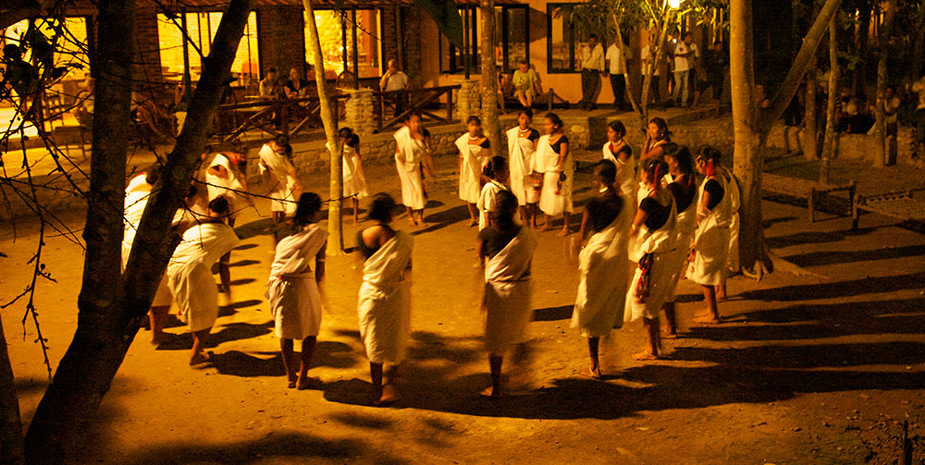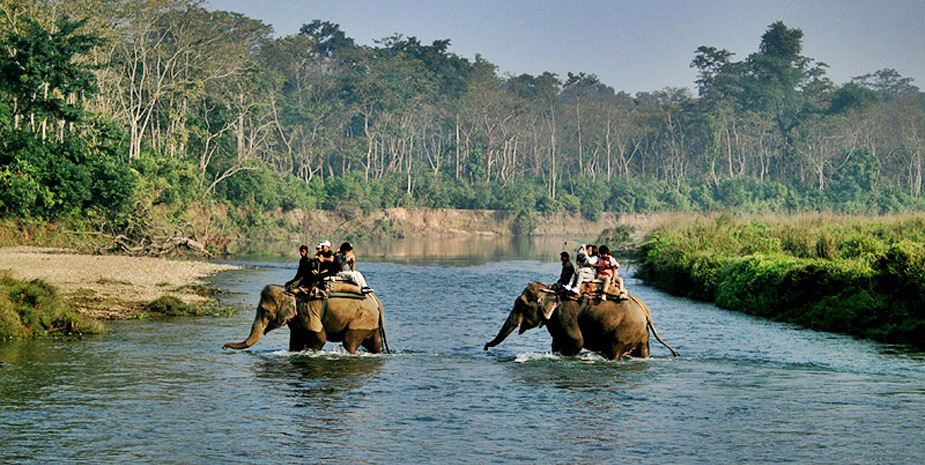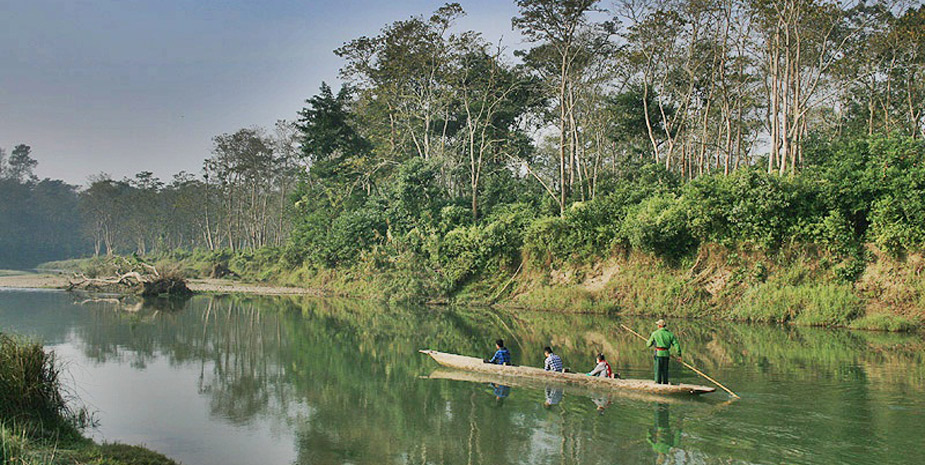 The Park covers a pristine area with a unique ecosystem of significant value to the world and is a firm favourite destination for visitors to Nepal.
The Park covers a pristine area with a unique ecosystem of significant value to the world and is a firm favourite destination for visitors to Nepal.
It contains the Churiya hills, oxbow lakes and flood plains of the Rapti, Reu and Narayani Rivers. Approximately 70% of the Park vegetation is sal forest and the remaining vegetation types include grassland, riverine forest and chiropine. Sal leaves are used locally for plates in festivals and religious offerings. The grasslands form a diverse and complex community with over 50 species. The saccharum species, often called elephant grass, can reach a huge 8m in height. The shorter grasses such as imperate are use for commonly for thatching roofs, mats, rope and papermaking.
There are more than 43 species of mammals in the Park. The Park is especially renowned for the endangered one-horned rhinoceros, the tiger and the gharial crocodile along with many other common species of wild animals. It also harbours endangered species such as gaur, wild elephant, four-horned antelope, striped hyena, pangolin, Gangetic dolphin, monitor lizard and python. Other animals found in the Park include the sambar, chital, hog deer, barking deer, sloth bear, palm civet, langur and rhesus monkey.
There are over 450 species of birds in the Park. Among the endangered bird species is the Bengal jolrican, giant hornbill, lesser florican, black stork and white stork. Common birds seen in the Park include the peafowl, red jungle fowl, and different species of egrets, herons, kingfishers, flycatchers and woodpeckers. The best time for bird watching is March and December.
More than 45 species of amphibians and reptiles occur in the Park, some of which are the marsh crocodile, cobra, green pit viper and various species of frogs and tortoises. The Park is actively engaged in the scientific studies of several species of wild fauna and flora.
Background
Royal Chitwan National Park (RCNP) has long been one of the country's treasures of natural wonders. The park is situated in south central Nepal, covering 932 sq. km. in the subtropical lowlands of the inner Terai. The area comprising the Tikauli forest - from Rapti river to the foothills of the Mahabharat - extending over an area of 175 sq. km. was declared Mahendra Mriga Kunj (Mahendra Deer Park) by the late King Mahendra in 1959. In 1963, the area south of Rapti River was demarcated as a rhinoceros sanctuary. The area was gazetted as the country's first national park in 1973. Recognizing its unique ecosystems of international significance, UNESCO declared RCNP a World Heritage Site in 1984.
In 1996, an area of 750 sq. km surrounding the park was declared a buffer zone that consists of forests and private lands. The park and the local people jointly initiate community development activities and manage natural resources in the buffer zone. Historically the Government of Nepal made a provision of ploughing back 30-50 per cent of park revenue for community development in the buffer zone.
 CLIMATE
Conditions are subtropical with a summer monsoon from mid-June to late-September, and a relatively dry winter. Mean annual rainfall is 2,400 mm with about 90% falling in the monsoon from June to September. Monsoon rains cause dramatic floods and changes in the character and courses of rivers. Temperatures are highest (maximum 38┬░C) during this season and drop to a minimum of 6┬░C in the post-monsoon period (October to January), when dry northerly winds from the Himalaya and Tibetan Plateau are prevalent.
CLIMATE
Conditions are subtropical with a summer monsoon from mid-June to late-September, and a relatively dry winter. Mean annual rainfall is 2,400 mm with about 90% falling in the monsoon from June to September. Monsoon rains cause dramatic floods and changes in the character and courses of rivers. Temperatures are highest (maximum 38┬░C) during this season and drop to a minimum of 6┬░C in the post-monsoon period (October to January), when dry northerly winds from the Himalaya and Tibetan Plateau are prevalent.
Local Cultures
Tharus are the main indigenous ethnic groups in Chitwan. They are well known for their resistance to malaria. Traditionally they are subsistence farmers and practice their own unique tribal culture. A stroll or a ride through the Tharu village will provide an opportunity to see their traditional farming practices and way of living. The Traditional Tharu stick dance gives an exciting insight into their culture.
PARK REGULATIONS
- Flora and fauna are fully protected and must not be disturbed.
- Do not purchase illegal animal or plant products.
- Respect religious and cultural sites.
- Place trash in the bins provided.
- No one should walk within the park between sunset and sunrise.




